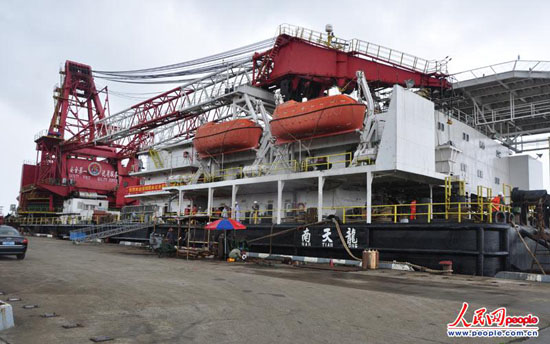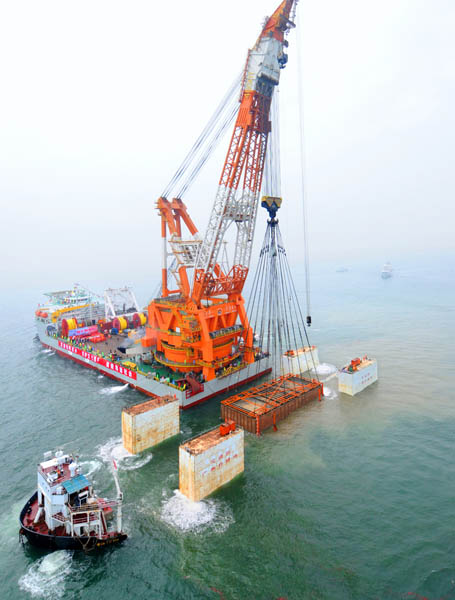
Experts with Chinese salvage teams in the South China Sea say they are working hard to protect treasure and cultural relics buried beneath the waves.
"We've successfully raised the Nanhai-1 intact out of the water, and we're confident we can salvage other similar ships," said Hong Chong, director of the Guangzhou Salvage Bureau.
The bureau has conducted more than 160 successful emergency salvage missions since it was founded in 2003, most of them in the South China Sea.
Hong said that more than 800 ancient vessels lie at the bottom of the sea, although other experts suggest the number could be in excess of 1,000. The sea was an important part of the so-called Marine Silk Road, China's southern passage to the outside world in ancient times.
In 2007, Guangzhou Salvage Bureau salvaged the Nanhai-1, a 30.4-meter-long trade vessel built during the Song Dynasty (AD 960-1279) that sank about 800 years ago. It had been carrying a cargo of porcelain, gold, jewels and other artifacts.
One of the oldest sunken wrecks found intact in the world, the vessel is now preserved in a sealed pool at a museum in Yangjiang, Guangdong province.
Liu Weiliang, chief salvage supervisor for the bureau, said more ancient vessels should be salvaged to protect them from looting.

Many sunken ships in shallow waters off Fujian province, which neighbors Guangdong, have been severely damaged and cultural relics in the ships stolen by fishermen, he said.
"The situation is better in waters off Guangdong, as they are usually deeper than 20 meters," he said. "This makes it more difficult for looters to salvage what is left."
However, an official with the China Underwater Cultural Heritage Protection Center said there are no immediate plans for large-scale salvage operations similar to the raising of the Nanhai-1.
"There aren't many technical difficulties to salvaging them, but protecting them after the ships are moved to the land is a problem," said the official, who did not want to be identified. "We still lack adequate protection facilities and technologies."
Six years after the entire vessel was recovered, exploration of the Nanhai-1 has still not started, for fear of damaging the precious cultural relics inside.
"After staying underwater for hundreds of years, the structures of the ship have become extremely fragile," salvage expert Liu said. "The wooden boards will shatter into pieces with a slight pinch."
Culture authorities are working to speed up the process, and an exploration of the ship's interior is expected in the next two years, said Zhang Yongqiang, who is also with the Guangzhou Salvage Bureau.
"Protection of cultural relics retrieved from underwater is a difficult task facing experts from all over the world," said Cao Jin, an archeologist at Guangdong Institute of Cultural Relics.
"Compared with salvage operations, protection of the cultural relics is a more arduous task."
